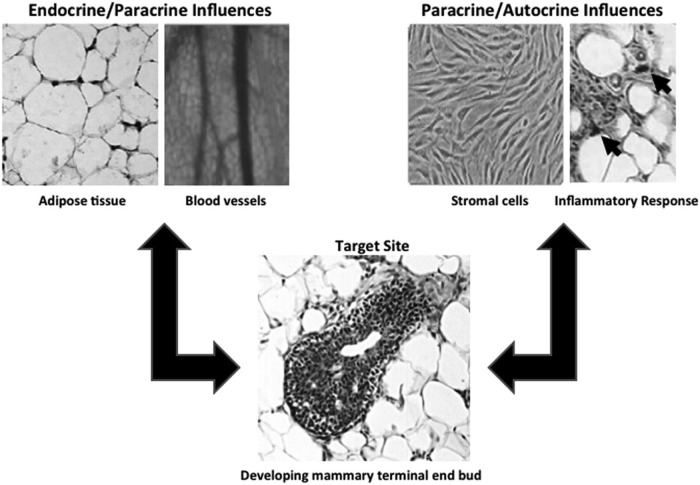Figure 7.
The multiple influences of the environment on mammary development. Environmental factors may affect breast development and later-life risk for disease or dysfunction via indirect and direct mechanisms. Environmental exposures may change endogenous signals (hormones and growth factors) that affect endocrine organs, as well as tissues near the mammary gland (ie, fat). Those nearby tissues can send atypical messages through the vascular system, culminating in perturbed mammary development. Mammary tissue may also be a direct target of environmental exposures; epithelia, fibroblasts, fat cells, and inflammatory cells express unique and shared receptors that are targets for environmental chemicals. The tight cellular junctions signal across cell types, affecting neighboring cells as well as the target cells (ie, epithelial cells in the terminal end bud). These various endocrine/paracrine/autocrine signaling mechanisms may affect the status of mammary epithelia over the lifetime of the individual. [Reprinted from Figure 2 in S. E. Fenton et al: Perinatal environmental exposures affect mammary development, function, and cancer risk in adulthood. Annu Rev Pharmacol Toxicol. 2012;52:455–479 (1276), with permission. © Annual Reviews.]

